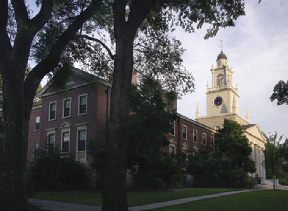Preservationists often have to face the decision of restoring structures in need of repair to original specifications or to implement modern-day techniques designed to save buildings from further deterioration.
I recently examined this topic at the annual Association for Preservation Technology (APT) conference in San Juan, Puerto Rico.
Focusing on restoration work performed at Phillips Academy in Andover, Mass. on the Fuller Memorial Bell Tower, myself along with Arthur MacLeod of MacLeod Consulting and Henry Moss of Bruner/Cott & Associates, Architects and Planners, presented on techniques used and lessons learned in restoring the historically significant tower. Due to material and design issues in the tower's original construction, the decision was made to rebuild the tower with modern materials and techniques while preserving the original look and feel of the structure.
Included in the presentation were multiple examples of how modern construction aided in preserving the future of this important monument. The team applied current methodologies to keep moisture and other natural elements out of the building, such as using a masonry cavity wall system, a modern technique that allows moisture to drain through a purposely-built airspace and exit at weep holes instead of collecting in hairline cracks between brick and mortar. Additionally, the presentation included how the team chose new materials such as fiberglass to replicate the tower's historic wooden urns that had disintegrated beyond repair. Despite being a different material than the original design, the replicated urns will be able to survive the test of time better than wood.
Other aspects of the project that were discussed in the presentation included the importance of pre-planning, and how the involvement of a construction manager aided in the design and decision process for the selection of replacement materials that were critical to the tower's long-term survival. By maintaining a high level of organization, such as interviewing potential brick manufacturers a year before construction began, the team was able to procure new brick to replace the original materials which had suffered complete failure as a result of poor design. The new brick, while not original, still incorporates the authentic hand tracings and inscriptions, maintaining the historic look and feel while utilizing materials that will enhance the tower's stability.
The Association for Preservation Technology International (APT) is a cross-disciplinary, membership organization dedicated to promoting the best technology for conserving historic structures and their settings. APT members, who hail from more than 30 countries, include preservationists, architects, engineers, conservators, consultants, contractors, craftspersons, curators, developers, landscape architects, students, technicians, and other persons.
Matthew Tonello is a project executive with Consigli Construction Co., Inc., Portland, ME.
Tags:
Consigli's presentation at APT conference addresses challenges in historic preservation
February 14, 2008 - Construction Design & Engineering










.png)